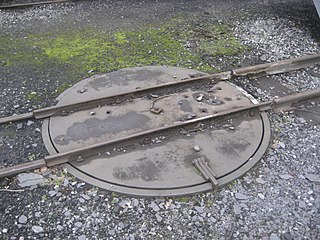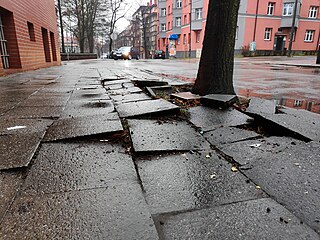In law and insurance, a proximate cause is an event sufficiently related to an injury that the courts deem the event to be the cause of that injury. There are two types of causation in the law: cause-in-fact, and proximate cause. Cause-in-fact is determined by the "but for" test: But for the action, the result would not have happened. The action is a necessary condition, but may not be a sufficient condition, for the resulting injury. A few circumstances exist where the but-for test is ineffective. Since but-for causation is very easy to show, a second test is used to determine if an action is close enough to a harm in a "chain of events" to be legally valid. This test is called proximate cause. Proximate cause is a key principle of insurance and is concerned with how the loss or damage actually occurred. There are several competing theories of proximate cause. For an act to be deemed to cause a harm, both tests must be met; proximate cause is a legal limitation on cause-in-fact.

Blair is a city in and the county seat of Washington County, Nebraska, United States. The population was 7,990 at the 2010 census. Blair is a part of the Omaha-Council Bluffs Metropolitan Statistical Area.

Palsgraf v. Long Island Railroad Co., 248 N.Y. 339, 162 N.E. 99 (1928), is a leading case in American tort law on the question of liability to an unforeseeable plaintiff. The case was heard by the New York Court of Appeals, the highest state court in New York; its opinion was written by Chief Judge Benjamin Cardozo, a leading figure in the development of American common law and later a United States Supreme Court justice.

In rail terminology, a railway turntable or wheelhouse is a device for turning round railway rolling stock, usually locomotives, so that they face the direction they came from. It is especially used in areas where economic considerations or a lack of sufficient space have served to weigh against the construction of a turnaround wye. Railways needed a way to turn steam locomotives around for return journeys, as their controls were often not configured for extended periods of running in reverse; also many locomotives had a lower top speed in reverse. Most diesel locomotives, however, can be operated in either direction, and are considered to have "front ends" and "rear ends". When a diesel locomotive is operated as a single unit, the railway company often prefers, or requires, that it be run "front end" first. When operated as part of a multiple unit locomotive consist, the locomotives can be arranged so that the consist can be operated "front end first" no matter which direction the consist is pointed. Turntables were also used to turn observation cars so that their windowed lounge ends faced toward the rear of the train.
Erie Railroad Co. v. Tompkins, 304 U.S. 64 (1938), was a landmark U.S. Supreme Court decision in which the Court held that the United States does not have a general federal common law and that U.S. federal courts must apply state law, not federal law, to lawsuits between parties from different states that do not involve federal questions. In reaching this holding, the Court overturned almost a century of federal civil procedure case law, and established the foundation of the modern law of diversity jurisdiction.

In tort law, a duty of care is a legal obligation that is imposed on an individual, requiring adherence to a standard of reasonable care to avoid careless acts that could foreseeably harm others, and lead to claim in negligence. It is the first element that must be established to proceed with an action in negligence. The claimant must be able to show a duty of care imposed by law that the defendant has breached. In turn, breaching a duty may subject an individual to liability. The duty of care may be imposed by operation of law between individuals who have no current direct relationship but eventually become related in some manner, as defined by common law.

English tort law concerns the compensation for harm to people's rights to health and safety, a clean environment, property, their economic interests, or their reputations. A "tort" is a wrong in civil law, rather than criminal law, that usually requires a payment of money to make up for damage that is caused. Alongside contracts and unjust enrichment, tort law is usually seen as forming one of the three main pillars of the law of obligations.

The attractive nuisance doctrine applies to the law of torts in some jurisdictions. It states that a landowner may be held liable for injuries to children trespassing on the land if the injury is caused by an object on the land that is likely to attract children. The doctrine is designed to protect children who are unable to appreciate the risk posed by the object, by imposing a liability on the landowner. The doctrine has been applied to hold landowners liable for injuries caused by abandoned cars, piles of lumber or sand, trampolines, and swimming pools. However, it can be applied to virtually anything on the property.
Katko v. Briney, 183 N.W.2d 657, is a court case decided by the Iowa Supreme Court, in which homeowners Edward and Bertha Briney were held liable for battery for injuries caused to trespasser Marvin Katko, who set off a spring gun set as a mantrap in an uninhabited house on their property. The case thereafter received wide attention in legal circles, becoming a staple of tort law casebooks and law school courses.

In the law of tort, property, and criminal law a trespasser is a person who commits the act of trespassing on a property, that is, without the permission of the owner. Being present on land as a trespasser thereto creates liability in the trespasser, so long as the trespass is intentional. At the same time, the status of a visitor as a trespasser defines the legal rights of the visitor if they are injured due to the negligence of the property owner.
In tort common law, the defense of necessity gives the state or an individual a privilege to take or use the property of another. A defendant typically invokes the defense of necessity only against the intentional torts of trespass to chattels, trespass to land, or conversion. The Latin phrase from common law is necessitas inducit privilegium quod jura privata. A court will grant this privilege to a trespasser when the risk of harm to an individual or society is apparently and reasonably greater than the harm to the property. Unlike the privilege of self-defense, those who are harmed by individuals invoking the necessity privilege are usually free from any wrongdoing. Generally, an individual invoking this privilege is obligated to pay any actual damages caused in the use of the property but not punitive or nominal damages.
Premises liability is the liability that a landowner or occupier has for certain torts that occur on their land.
The following outline is provided as an overview of and introduction to tort law in common law jurisdictions:
The Sioux City and Pacific Railroad was a railroad in the U.S. states of Iowa and Nebraska. Built as a connection from Sioux City, Iowa to the Union Pacific Railroad at Fremont, Nebraska, it became part of the Chicago and North Western Railway system in the 1880s, and is now a main line of the Union Pacific (UP). The east–west portion from Fremont to Missouri Valley, Iowa, is the Blair Subdivision, carrying mainly westbound UP trains, and the line from California Junction, Iowa north to Sioux City is the Sioux City Subdivision.
Admiralty law in the United States is a matter of federal law.
United Zinc & Chemical Co. v. Britt, 258 U.S. 268 (1922), was a case decided by the Supreme Court of the United States that limited liability for landowners regarding injuries to child trespassers.

The eggshell rule is a well-established legal doctrine in common law, used in some tort law systems, with a similar doctrine applicable to criminal law. The rule states that, in a tort case, the unexpected frailty of the injured person is not a valid defense to the seriousness of any injury caused to them.
The peculiar risk doctrine is a legal doctrine in the U.S. state of California by which an owner or employer can be held vicariously liable for damages caused by an independent contractor negligently performing his or her work.

Venning v Chin (1974) 10 SASR 299 is a Supreme Court of South Australia full court judgment, by which it was decided that in trespass cases, the onus lies on the defendant to disprove fault. However, for injuries caused in highway accidents, the onus is on the plaintiff to prove fault on the part of the defendant.










